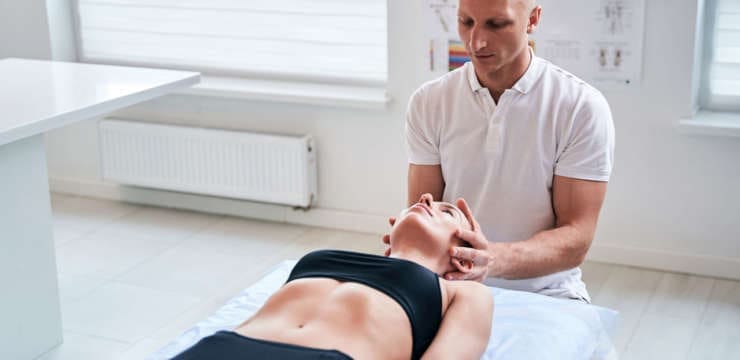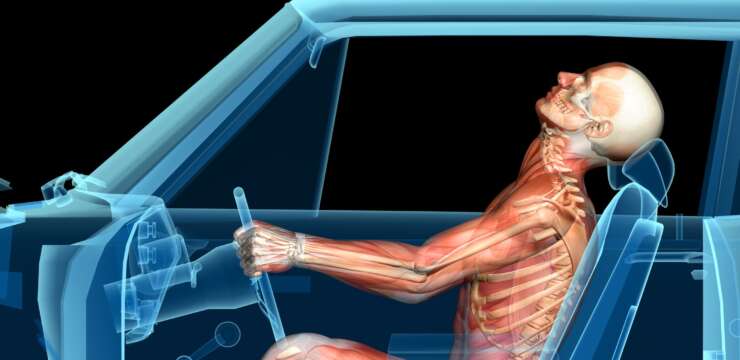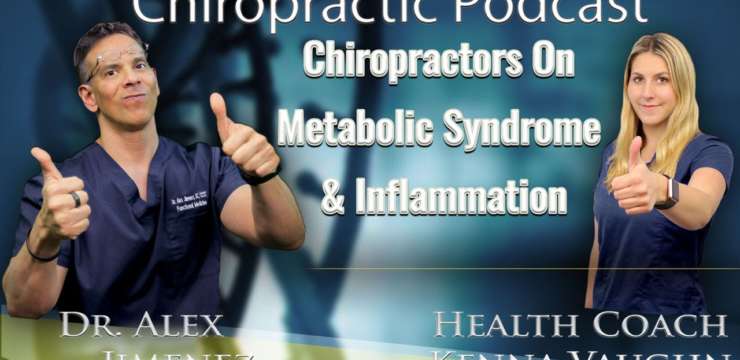
Discover the significance of chiropractic care in correcting text neck and posture and supporting overall spine health.
Table of Contents
Text Neck, Explained: A Complete, Evidence-Informed Guide to Relief with Chiropractic and Integrative Care
Text neck is a modern posture problem that can trigger neck, shoulder, and arm pain. This comprehensive, evidence-informed guide explains causes, symptoms, and non-surgical treatments—chiropractic care, targeted exercises, massage therapy, acupuncture, ergonomics, and lifestyle—to help you feel and move better.
TL;DR
- “Text neck” describes neck pain and related symptoms linked to prolonged head-down device use and forward-head posture. (Tsantili et al., 2022; Correia et al., 2021). (PubMed)
- It’s common and influenced by behavior and environment (device time, workstation height, backpack load, sedentary habits). (Kazeminasab et al., 2022; Ben Ayed et al., 2019). (PubMed)
- Chiropractic care and other non-drug options—spinal adjustments/mobilization, exercise therapy, massage, acupuncture, and ergonomics—show benefit for many patients with neck pain when matched to findings from a thorough evaluation. (Barreto & Svec, 2019; Kuligowski et al., 2021; Piruta & Ku?ak, 2025). (PubMed)
- Symptoms can include neck stiffness/pain, shoulder and upper-back tightness, headaches, and radiating arm symptoms if nerves are irritated. (Binder, 2008; Verma et al., 2021). (PubMed)
- This guide includes clinically grounded exercise progressions, stretch sequences, and ergonomic tips plus insights from El Paso’s Dr. Alexander Jimenez, DC, APRN, FNP-BC about communication-first, integrative care. (El Paso, TX Doctor Of Chiropractic)
What Is “Text Neck”?
“Text neck” is a practical term for a cervical pain pattern associated with long periods of head-down device viewing and forward-head posture. While people have always looked downward to read or work, the frequency and duration of smartphone and laptop use have made sustained flexed head positions more routine. Over time, that posture can increase mechanical load on cervical joints and demand more from the neck’s supporting muscles, which may fuel discomfort, stiffness, and fatigue. (Tsantili, Chrysikos, & Troupis, 2022; Correia et al., 2021). (PubMed)
Clinically, text neck isn’t a single diagnosis. It’s a cluster of posture-related contributors that can be assessed and addressed through a thorough history, exam, and functional testing. (Misailidou et al., 2010). (PubMed)
How Common Is Neck Pain—and Why Does It Matter?
Neck pain is highly prevalent worldwide, affecting people across ages and occupations. Global data show neck pain as a leading cause of disability with significant societal impact, and risk factors span biomechanical stressors, psychosocial load, and lifestyle. (Kazeminasab et al., 2022). (PubMed)
Among younger populations, school-based studies link computer time, furniture height, and backpack habits with neck, shoulder, and back pain—highlighting how environmental setup and behavior interact. (Ben Ayed et al., 2019). (PubMed)
Environmental & Behavioral Factors That Drive Text Neck
Text neck is rarely just about the phone. It’s a system problem influenced by the surfaces you sit at, the loads you carry, and the time you spend still.
- Device time and viewing angle. Longer daily smartphone use correlates with increased neck pain in university students. Viewing angle and sustained flexion matter. (Al-Hadidi et al., 2019; Correia et al., 2021). (PubMed)
- Workstation setup. A low desk or poorly positioned screen increases flexion demand on the neck and upper back. (Ben Ayed et al., 2019). (PubMed)
- Sedentary time and gaming/TV. Prolonged sitting and certain leisure behaviors (e.g., long gaming sessions) are associated with spine complaints. (Ben Ayed et al., 2019). (PubMed)
- Loads and repetitive forces. Even outside desk life, repetitive or extreme forces (e.g., high-G exposure in pilots) can sensitize neck tissues, underscoring how mechanical stressors add up over time. (Mastalerz et al., 2022). (PubMed)
- Psychosocial stress and sleep. Stress, low activity, and disturbed sleep can amplify pain experience and reduce tissue recovery reserves. (Kazeminasab et al., 2022). (PubMed)
Bottom line: Your environment + habits shape the loads your neck must handle. Small daily changes, multiplied over months, deliver big dividends.
Symptoms & Issues: Neck, Shoulders, Upper Extremities
Common complaints:
- Neck pain and stiffness that worsens after screen time
- Upper-back and shoulder tightness; scapular fatigue or “burning”
- Reduced range of motion (especially rotation and extension)
- Headaches, often starting in the neck (cervicogenic) and referring to the temples or behind the eyes (Verma, Tripathi, & Chandra, 2021) (PubMed)
- Arm symptoms—numbness, tingling, weakness—if cervical nerve roots are irritated (Binder, 2008; Kuligowski et al., 2021) (PubMed)
Functional impacts: difficulty maintaining posture, reduced endurance for desk work, drained concentration, and avoidance of exercise—each of which can perpetuate the cycle.
Why Chiropractic Care Helps: The Clinical Rationale
A well-designed, non-surgical plan often starts with chiropractic evaluation and treatment integrated with exercise therapy and ergonomics—and, as needed, massage therapy and acupuncture.
1) Restoring segmental motion and reducing nociception
Spinal adjustments and mobilizations target hypomobile segments that restrict normal motion and overburden neighboring joints and muscles. Improving joint play and segmental motion may reduce pain signaling and improve movement efficiency, allowing the nervous system to re-calibrate posture and muscle activation patterns. These manual approaches can be paired with soft-tissue techniques. (Barreto & Svec, 2019; Kuligowski et al., 2021). (PubMed)
2) Re-educating neuromuscular control
Forward-head posture often coexists with deep neck flexor (DNF) weakness/endurance deficits and scapular stabilizer underuse. Chiropractors couple manual care with motor-control exercises—e.g., chin-tuck progressions and lower-trap/middle-trap activation—to restore muscular balance and postural endurance. (Misailidou et al., 2010; Piruta & Ku?ak, 2025). (PubMed)
3) Integrating nonpharmacologic therapies with solid evidence
Primary-care summaries and systematic reviews support exercise therapy, manual therapy, massage therapy, and acupuncture for chronic neck pain when matched to patient findings and preferences. (Barreto & Svec, 2019). (PubMed)
4) Addressing radicular symptoms without surgery (when appropriate)
In cases with radiating arm pain/paresthesia consistent with cervical radiculopathy (and no red flags), evidence suggests manual therapy combined with specific exercise can reduce pain and disability. (Kuligowski et al., 2021). (PubMed)
Takeaway: Chiropractic care is not about force—it’s about assessment, precise application, and communication to help tissues tolerate daily loads again. (Barreto & Svec, 2019; Dr. Jimenez’s integrative emphasis). (PubMed)
How Clinicians Evaluate Text Neck
A complete evaluation looks beyond “the neck hurts.”
- History: onset, behaviors (device time, breaks), workstation setup, sleep, stress, prior episodes.
- Red flags: trauma, unexplained weight loss, fever, progressive neurological deficit, cancer history—prompt medical workup.
- Movement & posture: cervical ROM, DNF endurance, scapular control, thoracic mobility.
- Neurologic screen: myotomes, dermatomes, reflexes; upper limb tension tests when appropriate.
- Measurement tools: pain scales, disability questionnaires (e.g., Neck Disability Index), and functional tests. (Misailidou et al., 2010; Binder, 2008). (PubMed)
A Practical, Non-Surgical Treatment Plan
Always customize with your clinician. Stop any exercise that causes sharp, worsening, or radiating pain.
Phase 1 (Weeks 0–2): Calm It Down + Set the Foundation
Goals: reduce pain/guarding, establish posture basics, introduce gentle activation.
Clinic options
- Chiropractic adjustments/mobilizations to restore motion and reduce guarding.
- Soft-tissue work (massage therapy) for upper trapezius, levator scapulae, suboccipitals, pec minor.
- Acupuncture (where available) to modulate pain and muscle tension. (Barreto & Svec, 2019). (PubMed)
Home program (daily)
- Micro-break rule: 2–3 minutes every 25–30 minutes.
- Relative rest: reduce total daily head-down minutes by 25–50% for 1–2 weeks.
- Breathing reset: 5 slow nasal breaths with long exhales; relax shoulders.
- Gentle mobility:
- Cervical rotations (pain-free range), 5× each side, 2–3/day.
- Thoracic extension over a towel (upper back), 5 breaths × 3 sets.
- Activation:
- Chin-tuck (DNF set): lying, flatten the curve just enough to make a “double chin.” Hold 5–7 sec × 6–8 reps, 1–2/day.
- Scapular setting: sitting/standing, gently draw shoulder blades down/back (no rib flare), 5 sec × 10 reps.
Ergonomics quick start
- Screen height: top of screen near eye level.
- Phone use: raise phone to eye level; use two-handed grip and elbows supported.
- Chair: hips slightly higher than knees; back supported.
- Lighting: reduce glare to limit head-forward squinting.
- Carry loads smartly: avoid one-shoulder bags for long periods; keep backpack weight sensible (school data suggest lighter loads reduce symptoms). (Ben Ayed et al., 2019). (PubMed)
Phase 2 (Weeks 3–6): Build Endurance + Expand Motion
Goals: strengthen postural system, lengthen tight tissues, improve work capacity.
Progressions
- DNF endurance: chin-tuck holds to 10–12 sec; 2–3 sets of 6–8 reps, daily.
- Scapular strength:
- Wall slides (focus lower traps), 8–12 reps × 2–3 sets, 3–4×/week.
- Prone “Y” and “T” (light dumbbells if tolerated), 8–12 reps × 2–3 sets, 3×/week.
- Stretching (30–45 sec each, 1–2×/day):
- Upper trapezius stretch (ear to shoulder, slight rotation).
- Levator scapulae stretch (turn 45° away, nod toward armpit).
- Pectoralis doorway stretch (forearm on frame, step forward).
- Thoracic mobility: foam-roller extensions; open-book rotations 8–10/side.
Optional clinic additions
- Instrument-assisted soft-tissue mobilization for persistent myofascial restrictions.
- Acupuncture sessions to support pain modulation and function. (Barreto & Svec, 2019). (PubMed)
Phase 3 (Weeks 7–12): Resilience + Return to Full Demand
Goals: tolerate long work blocks, varied positions, and daily life without flare-ups.
- Work blocks: build to 50–60 minutes sitting, then 5 minutes movement.
- Strength circuit (3×/week):
- Chin-tuck with lift (supine nod then slight lift), 8–10 reps.
- Rowing (band or cable) emphasizing shoulder-blade motion, 12–15 reps.
- Reverse flys (light), 12 reps.
- Farmer carry (two hands, neutral neck), 30–45 sec.
- Position variety: alternate sitting/standing; mix keyboard, voice dictation, and short walks between tasks.
Smartphone & Laptop Ergonomics You’ll Actually Use
- “Eye-level habit.” Lift the phone; use a stand for video calls.
- “Elbows anchored.” Rest forearms on armrests or desk to offload neck.
- “Type tall.” Sit tall, ribs over pelvis; imagine a string at the crown of your head.
- “Timer truth.” Alarms every 25–30 minutes to break posture inertia.
- “Two-screen rule.” If you constantly look between laptop and monitor, align heights and bring screens close to minimize neck rotation/flexion.
- “Backpack sanity.” Keep loads reasonable and balanced; use both straps. (Ben Ayed et al., 2019). (PubMed)
Headaches, Shoulders, and Arm Symptoms: What They Mean
- Headaches: Neck-driven (cervicogenic) headaches may improve with a combination of manual therapy, exercise, and posture retraining that addresses upper-cervical mechanics and muscle tone. (Verma et al., 2021). (PubMed)
- Shoulders/upper back: The scapula is the neck’s close partner. Strengthening lower/middle trapezius and serratus anterior reduces the load on cervical extensors during desk tasks.
- Arm paresthesia/weakness: Consistent with cervical radiculopathy or local nerve entrapment—get evaluated. Conservative care that blends manual therapy and exercise has supportive evidence in selected cases. (Kuligowski et al., 2021). (PubMed)
When Work, Sport, or Forces Turn It Up
Not all neck loads are desk-related. Occupations with repetitive or high forces—for instance, military pilots under high G-loads—illustrate how mechanical stress magnitude and repetition affect the spine. The message carries to everyday life: manage the intensity × time formula to keep tissues healthy. (Mastalerz et al., 2022). (PubMed)
Communication Over Force: Clinical Insights from Dr. Alexander Jimenez (El Paso)
Drawing from Dr. Alexander Jimenez’s integrative practice in El Paso, care is communication-first: clear explanations, stepwise goals, careful exam, and shared decision-making guide which techniques to use—and when to hold back. Evidence-informed chiropractic adjustments are blended with exercise therapy, myofascial work, and ergonomic coaching; where appropriate, acupuncture and rehabilitative modalities are integrated to support the body’s natural healing and prevent long-term problems. (El Paso, TX Doctor Of Chiropractic)
“Nonsurgical spine care works best when the plan fits the person—their job, their stressors, their movement habits—and when the clinician and patient stay in dialogue about what’s working.” — Clinical emphasis reflected in Dr. Jimenez’s integrative approach. (El Paso, TX Doctor Of Chiropractic)
For posture-specific tips, see Dr. Jimenez’s post on improving posture for text-neck relief; it underscores the value of strengthening, stretching, and better daily mechanics—a practical complement to hands-on care. (elpasochiropractorblog.com)
The Evidence on Text Neck, In Brief
- It’s real-world and measurable. Observational data link device use and forward-head posture with neck pain in adults and students. (Al-Hadidi et al., 2019; Correia et al., 2021). (PubMed)
- It’s part of a wider neck-pain landscape. Global analyses confirm neck pain’s high prevalence and a web of behavioral and environmental factors. (Kazeminasab et al., 2022). (PubMed)
- Non-drug care is central. Reviews highlight exercise, manual therapy, massage, and acupuncture as reasonable options for many neck-pain presentations. (Barreto & Svec, 2019; Piruta & Ku?ak, 2025). (PubMed)
- Assessment quality matters. Using clear definitions and validated measurement tools helps match the right treatment to the right patient. (Misailidou et al., 2010). (PubMed)
A Week-by-Week Posture & Exercise Playbook (12 Weeks)
This is a general template. Personalize with your clinician.
Weeks 1–2: Relief + Awareness
- Daily: micro-breaks; gentle rotations and sidebends; thoracic towel extensions.
- 3×/week: soft-tissue self-care (ball/foam roller on pecs/upper back).
- Activation: chin-tuck holds; scapular setting.
- Ergonomics: lift screens; anchor elbows; chair support; reduce device time 25–50%.
Weeks 3–4: Endurance + Mobility
- Daily: DNF holds progress; doorway pec stretch; UT/levator stretches.
- 3×/week: wall slides; band rows; open-book rotations.
- Add: 10-minute daily walk mid-shift to break sitting.
Weeks 5–8: Strength + Position Variety
- 3×/week circuit:
- Chin-tuck with lift, 8–10 reps
- Rows, 12–15 reps
- Reverse flys, 12 reps
- Farmer carry, 30–45 sec
- Daily: screen-height audit; breaks every 30 minutes; two 10-minute walks.
Weeks 9–12: Resilience + Real-Life Demands
- Extend sitting blocks to 50–60 minutes, but keep 5-minute movement breaks.
- Add light jog/elliptical if cleared; include rotational mobility days.
- Trial standing meetings or walking calls to cement new habits.
Building a Stronger Body = Better Life -Video
Massage Therapy & Acupuncture: Where They Fit
- Massage therapy can calm myofascial tension and complement adjustments and exercise, especially in the upper trapezius, levator scapulae, and suboccipitals.
- Acupuncture may reduce pain and facilitate relaxation and movement gains for some patients.
These are adjuncts, not replacements, to a movement-centered plan. (Barreto & Svec, 2019). (PubMed)
Simple Daily Habits That Protect Your Neck
- The “Rule of 4”: every hour, do 4 posture resets (chin-tuck ? shoulder roll ? thoracic lift ? slow exhale).
- Use voice-to-text for long messages.
- Batch notifications to avoid endless micro-glances downward.
- Hydrate + sleep—under-recovery magnifies pain. (Kazeminasab et al., 2022). (PubMed)
- Smart loading: two-strap backpacks; lighten loads whenever possible. (Ben Ayed et al., 2019). (PubMed)
When to Seek Care, Right Away
- Red flags: recent trauma; fever/unexplained weight loss; cancer history; progressive numbness/weakness; bowel/bladder changes.
- Severe or worsening arm pain or weakness.
- Headache red flags: thunderclap onset, neurological change—go to urgent care.
Frequently Asked Questions
Is text neck permanent?
Usually not. With consistent non-surgical care—manual therapy, exercise, ergonomics—most people improve meaningfully. (Barreto & Svec, 2019; Piruta & Ku?ak, 2025). (PubMed)
Do I need imaging?
Most posture-related neck pain doesn’t require immediate imaging. Your clinician screens for red flags and neurologic deficits before deciding. (Binder, 2008). (PubMed)
Can I keep working out?
Yes—scale intensity, keep the neck neutral, and progress gradually. Strengthening the upper back and core supports your neck.
Is chiropractic safe?
In qualified hands and with appropriate screening, spinal adjustments/mobilizations are widely used options. They’re often combined with exercise and education for the best results. (Barreto & Svec, 2019). (PubMed)
Putting It All Together
Text neck is common and modifiable. Thoughtful chiropractic and integrative care, backed by exercise, massage therapy, acupuncture, and ergonomics, helps you move more, hurt less, and prevent long-term problems. The most powerful tool isn’t force—it’s clear communication, tailored planning, and daily consistency. (Barreto & Svec, 2019; Dr. Jimenez’s integrative approach). (PubMed)
References
- Al-Hadidi, F., Bsisu, I., AlRyalat, S. A., Al-Zu’bi, B., Bsisu, R., Hamdan, M., Kanaan, T., Yasin, M., & Samarah, O. (2019). Association between mobile phone use and neck pain in university students: A cross-sectional study using numeric rating scale for evaluation of neck pain. PLoS ONE, 14(5), e0217231. doi.org/10.1371/journal.pone.0217231 (PubMed)
- Barreto, T. W., & Svec, J. H. (2019). Chronic neck pain: Nonpharmacologic treatment. American Family Physician, 100(3), 180–182. pubmed.ncbi.nlm.nih.gov/31361100/ (PubMed)
- Ben Ayed, H., Yaich, S., Trigui, M., Ben Hmida, M., Ben Jemaa, M., Ammar, A., Jedidi, J., Karray, R., Feki, H., Mejdoub, Y., Kassis, M., & Damak, J. (2019). Prevalence, risk factors and outcomes of neck, shoulders and low-back pain in secondary-school children. Journal of Research in Health Sciences, 19(1), e00440. pubmed.ncbi.nlm.nih.gov/31133629/ (PubMed)
- Binder, A. I. (2008). Neck pain. BMJ Clinical Evidence, 2008, 1103. pubmed.ncbi.nlm.nih.gov/19445809/ (PubMed)
- Correia, I. M. T., de Sá Ferreira, A., Fernandez, J., Reis, F. J. J., Nogueira, L. A. C., & Meziat-Filho, N. (2021). Association between text neck and neck pain in adults. Spine (Phila Pa 1976), 46(9), 571–578. pubmed.ncbi.nlm.nih.gov/33290371/ (PubMed)
- Kazeminasab, S., Nejadghaderi, S. A., Amiri, P., Pourfathi, H., Araj-Khodaei, M., Sullman, M. J. M., Kolahi, A.-A., & Safiri, S. (2022). Neck pain: Global epidemiology, trends and risk factors. BMC Musculoskeletal Disorders, 23(1), 26. pubmed.ncbi.nlm.nih.gov/34980079/ (PubMed)
- Kuligowski, T., Skrzek, A., & Cie?lik, B. (2021). Manual therapy in cervical and lumbar radiculopathy: A systematic review of the literature. International Journal of Environmental Research and Public Health, 18(11), 6176. pubmed.ncbi.nlm.nih.gov/34200510/ (PubMed)
- Mastalerz, A., Maruszy?ska, I., Kowalczuk, K., Garbacz, A., & Maculewicz, E. (2022). Pain in the cervical and lumbar spine as a result of high G-force values in military pilots—A systematic review and meta-analysis. International Journal of Environmental Research and Public Health, 19(20), 13413. pubmed.ncbi.nlm.nih.gov/36293993/ (PubMed)
- Misailidou, V., Malliou, P., Beneka, A., Karagiannidis, A., & Godolias, G. (2010). Assessment of patients with neck pain: A review of definitions, selection criteria, and measurement tools. Journal of Chiropractic Medicine, 9(2), 49–59. pubmed.ncbi.nlm.nih.gov/21629550/ (PubMed)
- Piruta, J., & Ku?ak, W. (2025). Physiotherapy in text neck syndrome: A scoping review of current evidence and future directions. Journal of Clinical Medicine, 14(4), 1386. pubmed.ncbi.nlm.nih.gov/40004916/ (PubMed)
- Tsantili, A.-R., Chrysikos, D., & Troupis, T. (2022). Text neck syndrome: Disentangling a new epidemic. Acta Medica Academica, 51(2), 123–127. pubmed.ncbi.nlm.nih.gov/36318004/ (PubMed)
- Verma, S., Tripathi, M., & Chandra, P. S. (2021). Cervicogenic headache: Current perspectives. Neurology India, 69(Suppl.), S194–S198. pubmed.ncbi.nlm.nih.gov/34003165/ (PubMed)
- El Paso Chiropractor Blog – Dr. Alex Jimenez. (2016). Improve posture for text neck relief. www.elpasochiropractorblog.com/2016/06/improve-posture-for-text-neck-relief.html (elpasochiropractorblog.com)
- Dr. Alex Jimenez – Personal Injury Specialist (Clinic site). (n.d.). dralexjimenez.com/ (El Paso, TX Doctor Of Chiropractic)
Disclaimer
This article is educational and not a substitute for medical advice. Consult your licensed healthcare professional for a personalized evaluation and plan. If you notice red-flag symptoms, seek urgent care.
Disclaimers
Professional Scope of Practice *
The information herein on "Text Neck & Posture Awareness Guide Using Chiropractic Care" is not intended to replace a one-on-one relationship with a qualified health care professional or licensed physician and is not medical advice. We encourage you to make healthcare decisions based on your research and partnership with a qualified healthcare professional.
Blog Information & Scope Discussions
Welcome to El Paso's wellness blog, where Dr. Alex Jimenez, DC, FNP-C, a board-certified Family Practice Nurse Practitioner (FNP-C) and Chiropractor (DC), presents insights on how our team is dedicated to holistic healing and personalized care. Our practice aligns with evidence-based treatment protocols inspired by integrative medicine principles, similar to those found on dralexjimenez.com, focusing on restoring health naturally for patients of all ages.
Our areas of chiropractic practice include Wellness & Nutrition, Chronic Pain, Personal Injury, Auto Accident Care, Work Injuries, Back Injury, Low Back Pain, Neck Pain, Migraine Headaches, Sports Injuries, Severe Sciatica, Scoliosis, Complex Herniated Discs, Fibromyalgia, Chronic Pain, Complex Injuries, Stress Management, Functional Medicine Treatments, and in-scope care protocols.
Our information scope is limited to chiropractic, musculoskeletal, physical medicine, wellness, contributing etiological viscerosomatic disturbances within clinical presentations, associated somato-visceral reflex clinical dynamics, subluxation complexes, sensitive health issues, and functional medicine articles, topics, and discussions.
We provide and present clinical collaboration with specialists from various disciplines. Each specialist is governed by their professional scope of practice and their jurisdiction of licensure. We use functional health & wellness protocols to treat and support care for the injuries or disorders of the musculoskeletal system.
Our videos, posts, topics, subjects, and insights cover clinical matters, issues, and topics that relate to and directly or indirectly support our clinical scope of practice.*
Our office has reasonably attempted to provide supportive citations and has identified the relevant research studies or studies supporting our posts. We provide copies of supporting research studies available to regulatory boards and the public upon request.
We understand that we cover matters that require an additional explanation of how they may assist in a particular care plan or treatment protocol; therefore, to discuss the subject matter above further, please feel free to ask Dr. Alex Jimenez, DC, APRN, FNP-BC, or contact us at 915-850-0900.
We are here to help you and your family.
Blessings
Dr. Alex Jimenez DC, MSACP, APRN, FNP-BC*, CCST, IFMCP, CFMP, ATN
email: coach@elpasofunctionalmedicine.com
Licensed as a Doctor of Chiropractic (DC) in Texas & New Mexico*
Texas DC License # TX5807
New Mexico DC License # NM-DC2182
Licensed as a Registered Nurse (RN*) in Texas & Multistate
Texas RN License # 1191402
ANCC FNP-BC: Board Certified Nurse Practitioner*
Compact Status: Multi-State License: Authorized to Practice in 40 States*
Graduate with Honors: ICHS: MSN-FNP (Family Nurse Practitioner Program)
Degree Granted. Master's in Family Practice MSN Diploma (Cum Laude)
Dr. Alex Jimenez, DC, APRN, FNP-BC*, CFMP, IFMCP, ATN, CCST
My Digital Business Card






